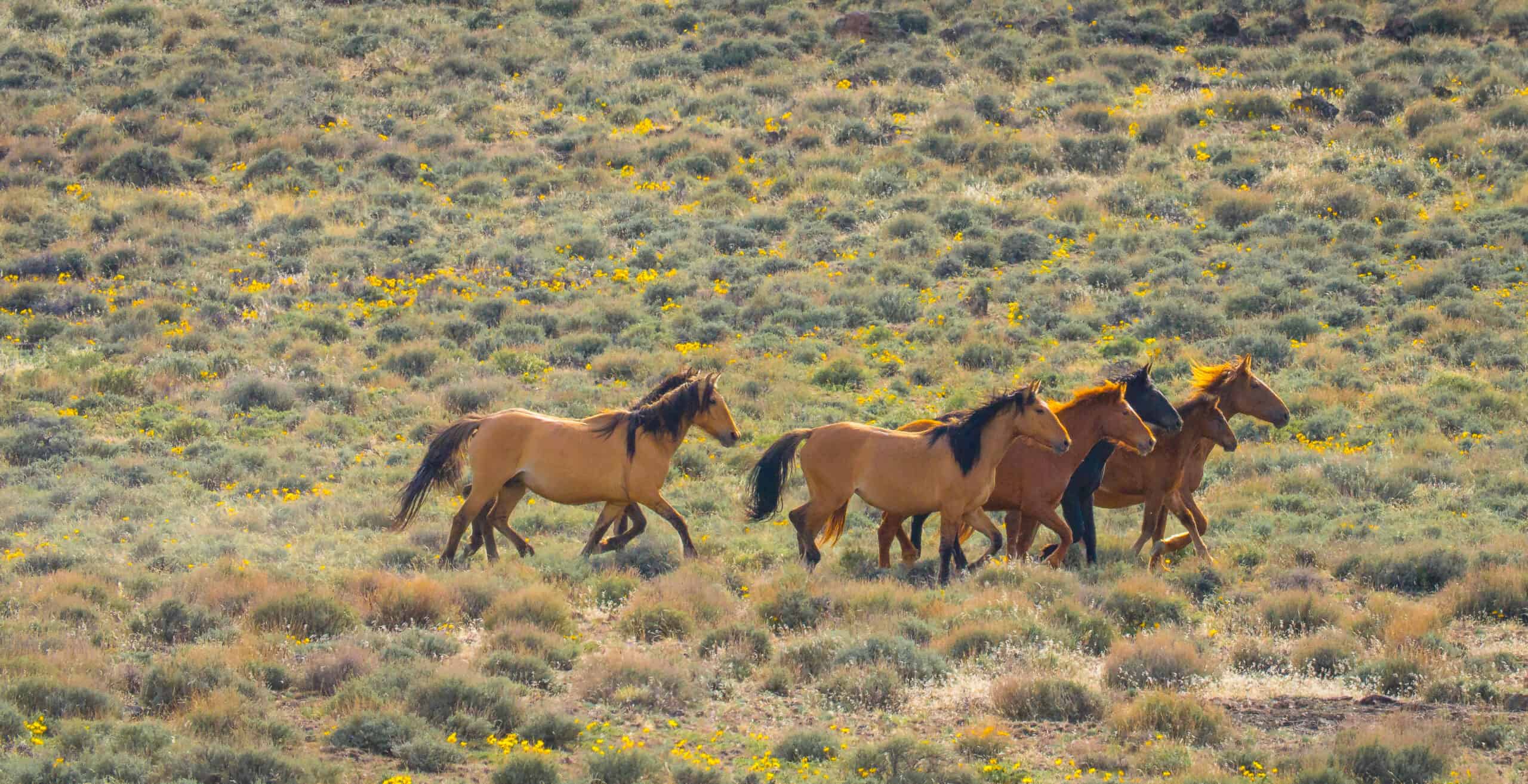Share this article
Wildlife Featured in this article
- wild horse
New tool models wild horse management outcomes
The new open-access modeling tool can help managers compare management methods and their costs
The U.S. Geological Survey and the Bureau of Land Management recently released a modeling program that will help managers predict the successes of nonlethal methods for managing wild horses on public lands. The new tool, PopEquus, takes peer-reviewed data to model management outcomes for wild horses and their costs. For example, it can predict the population size of a wild horse herd after 10 years if a number of them were given a fertility-control vaccine to prevent pregnancy. The new program is open access, and managers can use it to compare different management outcomes and costs. “At the USGS, we sought to provide a science-based tool for wild horse and burro managers to inform their decision making,” USGS Research Wildlife Biologist Kate Schoenecker said in a press release. “Being able to compare outcomes of various management actions and the financial costs of those actions can help managers consider and weigh trade-offs. We hope this tool will be educational for the public as well, as it shows the constraints and intricacies of managing wild horses and burros using real-life scenarios.”
Read more in at the Bureau of Land Management. Access the PopEquus interface here.
Header Image: A new open-access tool can help managers make decisions about how to manage wild horses. Credit: Jesse Pluim/BLM








